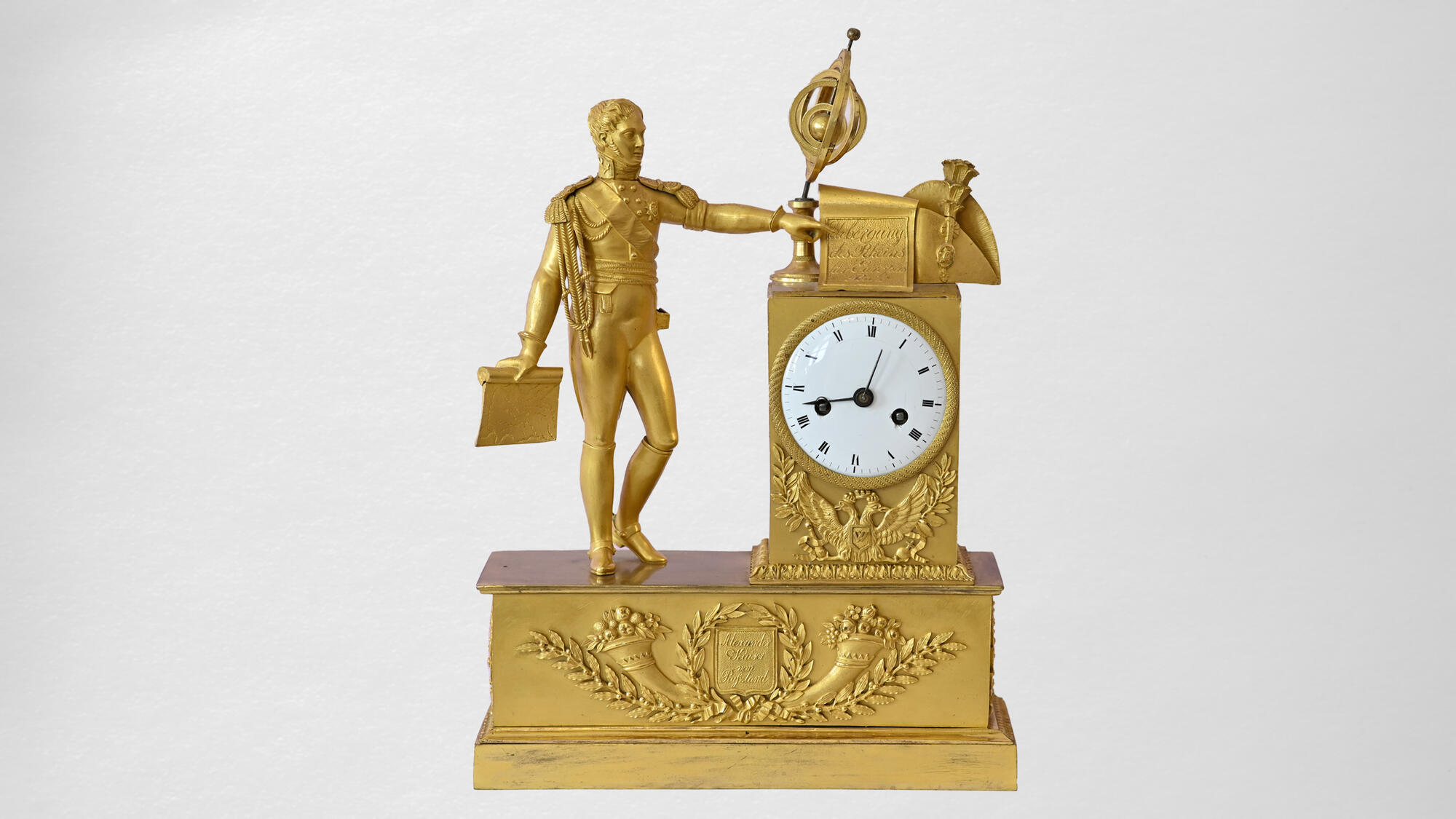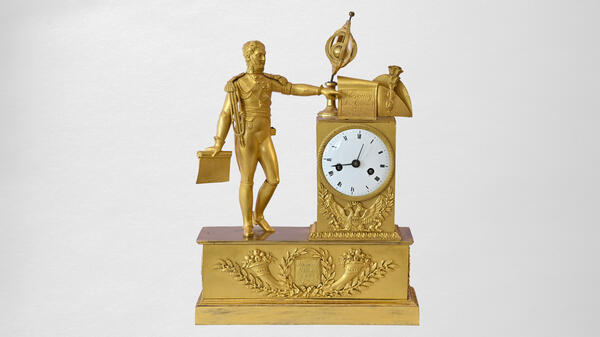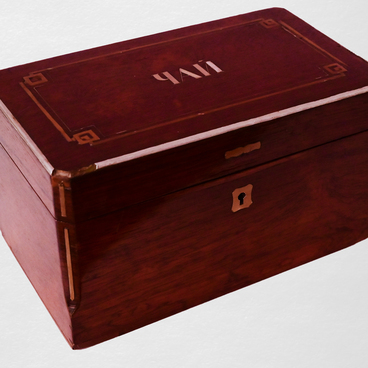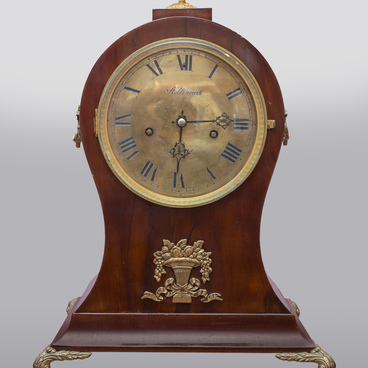The table clock ‘Alexander I orders to cross the Rhine’ was transferred to the Museum Estate from The State Hermitage Museum in December 1968, during preparations for the celebration of the 130th anniversary of the birth of Pyotr Tchaikovsky. Such custom-made ‘memorial’ clocks on a patriotic theme were popular in the 19th century.
The sculptural composition is dedicated to the events of autumn and winter 1813, when Napoleon’s army, being chased by Russian troops and allied forces, retreated across the Rhine River and left Germany. On November 19, at the allied military council in Frankfurt, it was decided to start a winter campaign and enter France. At the end of December, Alexander I ordered his troops to cross the Rhine.
The names of the customer and the manufacturer of the displayed clock are not known. A similar copy is housed in the Gatchina Museum-Reserve. All the inscriptions on the Gatchina clock are made in French, and the ones on the clock from the Tchaikovsky Museum Estate — in German.
The bronze case of the clock is gilded. It is made in the form of a rectangular stepped pedestal. It features an allegorical composition with a box into which the clock mechanism is installed. The pedestal and box are decorated with applied reliefs of gilded bronze in the form of cornucopias and laurel branches. The plate in the central part is engraved with an inscription, surrounded by a laurel wreath “Alexander Kaiser von Rußland”, which translates from German as “Alexander — the Emperor of Russia”. On the box-altar, one can see an applied relief in the form of a double-headed eagle surrounded by laurel branches, on the chest of which is a plate with the monogram “W”.
The figure of Emperor Alexander I in the uniform of the Life Guards of the Preobrazhensky Regiment is the main focal point of the composition, which carries the most artistic weight. In his right hand he holds a map of Europe, and with his left one points to a manuscript beginning with the words “Übergang des Rheins…”, which means “Crossing the Rhine…”.
Clocks with elaborate artistic compositions appeared at the turn of the 18th century and remained popular throughout the first quarter of the 19th century.
The sculptural composition is dedicated to the events of autumn and winter 1813, when Napoleon’s army, being chased by Russian troops and allied forces, retreated across the Rhine River and left Germany. On November 19, at the allied military council in Frankfurt, it was decided to start a winter campaign and enter France. At the end of December, Alexander I ordered his troops to cross the Rhine.
The names of the customer and the manufacturer of the displayed clock are not known. A similar copy is housed in the Gatchina Museum-Reserve. All the inscriptions on the Gatchina clock are made in French, and the ones on the clock from the Tchaikovsky Museum Estate — in German.
The bronze case of the clock is gilded. It is made in the form of a rectangular stepped pedestal. It features an allegorical composition with a box into which the clock mechanism is installed. The pedestal and box are decorated with applied reliefs of gilded bronze in the form of cornucopias and laurel branches. The plate in the central part is engraved with an inscription, surrounded by a laurel wreath “Alexander Kaiser von Rußland”, which translates from German as “Alexander — the Emperor of Russia”. On the box-altar, one can see an applied relief in the form of a double-headed eagle surrounded by laurel branches, on the chest of which is a plate with the monogram “W”.
The figure of Emperor Alexander I in the uniform of the Life Guards of the Preobrazhensky Regiment is the main focal point of the composition, which carries the most artistic weight. In his right hand he holds a map of Europe, and with his left one points to a manuscript beginning with the words “Übergang des Rheins…”, which means “Crossing the Rhine…”.
Clocks with elaborate artistic compositions appeared at the turn of the 18th century and remained popular throughout the first quarter of the 19th century.



